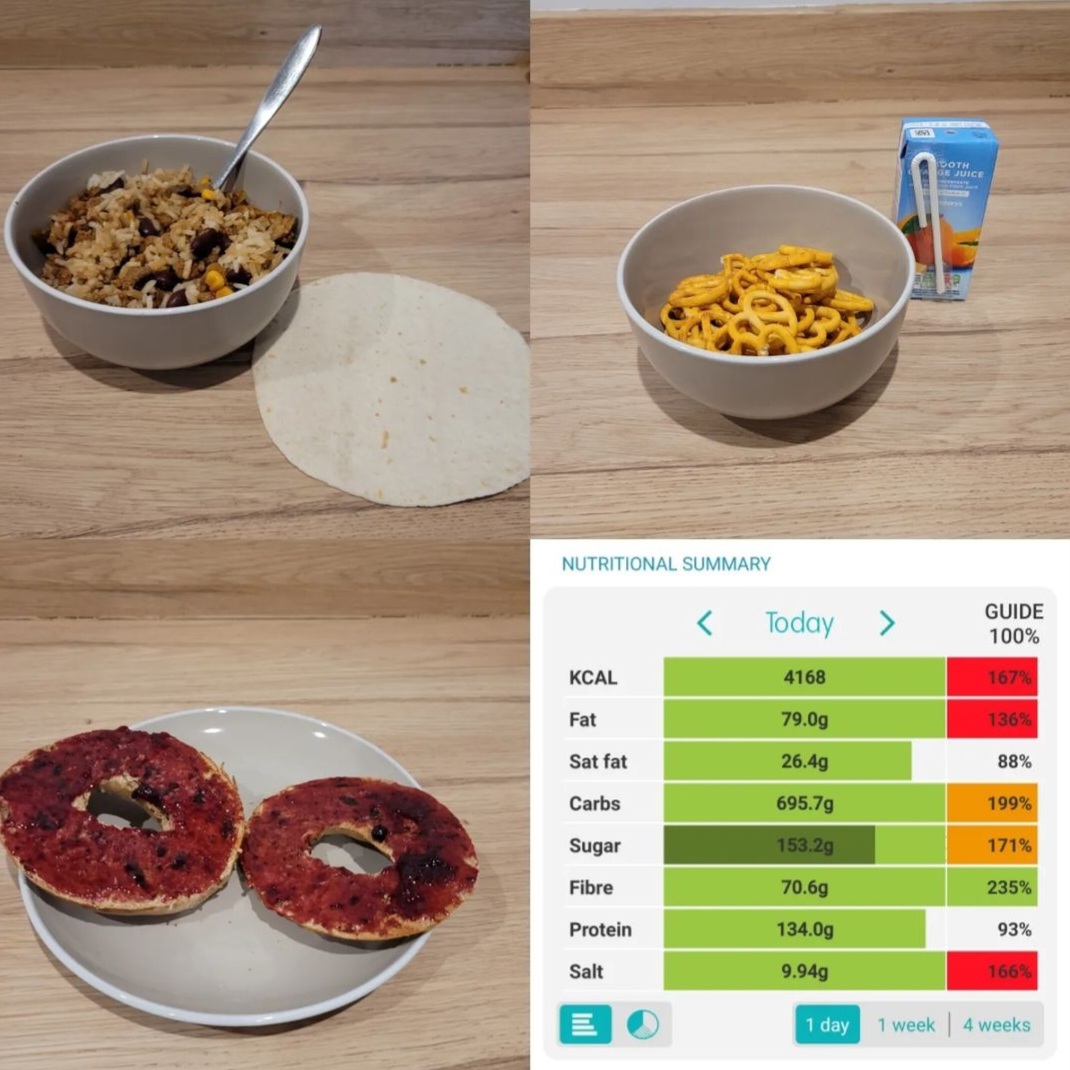I’ve written before about the importance of a good carb load before a marathon, including a few tips to help you consume higher than normal amounts of food. In this blog, we’ll cover this area in a little more detail.
Make it easy
Ironically, taking more time in order to actually plan your carb load can make it easier. This planning time makes it more complicated initially, but when the days come, it means you can relax and know what to eat and when.
Fitting in as much food as you’d ideally consume can also be tricky, so planning lets us keep other nutrients at a suitable level. Protein should generally be around 1.4g/kg of bodyweight per day for endurance athletes (yes that includes us amateurs). This is important because protein is digested in the lower intestines, and this releases a hormonal signal to the brain that satiates us. We really don’t want that when we’re trying to consume up to double our normal carb intake.
Ensuring fat content doesn’t rise drastically compared to normal also helps. We’ve all been there with an upset stomach after eating too much high fat food. Let’s face it, that doesn’t exactly make you want to eat more, does it.
Friday carb load
Carbing up throughout the day on Friday can be tricky, since you’re probably still at work, and can’t keep stopping every hour to eat. Since you’re at home or work though, your choice of food is ample and very flexible. You’ll need to look for easy snacking options in all likelihood. Things which can be eaten on-the-go, or at your desk perhaps. Fluid carbs such as fruit juice can be helpful here. I often use three 200ml cartons of orange juice spread throughout the day to help. This takes up less space in our stomach, and when combined with a starchy carb source as well, means we can absorb more carbohydrate in a given period. You can use flat fizzy drinks as well, but get no additional nutrition, whereas fruit juices will provide you with vitamins and minerals.
Saturday carb load
Saturday carb loading is more accessible, since you likely have no commitments other than traveling to the race, and perhaps collecting your race pack. That said, getting the right foods might be a little more difficult, keeping the protein and fat content in mind.
The planning of what to eat is the bigger benefit rather than timing on Saturday. You’ll have to take some snack foods with you, as well as eating out once if not twice. You’ll need to book a table in advance if you’re heading to a restaurant before a big city marathon, which helps make food choices that bit easier.
How to plan
You can do it by writing down the carb details from food packaging, either with what you have at home already, or doing some searching of supermarkets online. The other option would be to use a food tracking app such as Myfitnesspal or Nutracheck.
I know tracking in this way is often said to be useless or obsessive in the diet industry, but it does give us the information we need, and with such huge databases, they can save us time and effort. Many chain restaurants have their foods on the apps as well, so you can plan for home and when you’re away.
How many grams of carbs
Evidence suggests that 8-12g/kg of bodyweight per day for 2 days or 6-10g/kg of bodyweight per day for 3 days is a good amount. Whilst the lower amount spread over more days can be physically easier to manage, I’ve found people are too distracted on a Thursday to take it seriously, and end up missing the target on day 1 of the carb load.
For that reason, I generally recommend a 2-day carb load. I’d also look to gradually work into these amounts. Most people, even if they’ve run multiple marathons, haven’t done a proper carb load before, so start at the lower end of the range, and increase it with successive carb loads.
Planning the carb load
When you plan, start with the basics. Breakfast, lunch and dinner. Once you’ve maxed out on 60-90g of carbs in each of those, you can start adding your snack foods around them. Don’t forget the use of fluid carbs as I mentioned before.
With the contents of your carb load planned, the next step, in an ideal world, is to plan roughly when you’ll eat/drink each item.
Once I’ve planned out my carb load and done the food shop to get it all, I write it up on a spreadsheet or in a table and print it, with a column to write when I’ll eat each thing. I plot this in the days before, after looking at my diary to see when I have appointments. Although this is an extra step that doesn’t make carb loading easier for the most part, it can reduce the chances of you feeling bloated, or at least limit how bloated you feel. It also ensures you fit it all in from a logistics perspective, and can reduce the chances of having to cram it all in at the last minute which can disrupt sleep.
The key to good and easier execution of a carb load mostly comes down to planning. It won’t be perfect, and it does take some time to figure it out, but it’s time well invested to make the carb loading process more comfortable, more effective and less overwhelming. By planning your carb load and keeping a record of it, you can more easily prepare for the next time you carb load as well. This time invested makes every carb load you do from this point on, that bit easier.
If you’d like help planning your own carb load, this is something I can assist with in a nutrition session in person or via video call.
Written by Kyle Brooks, Running Coach based in Norwich, Norfolk

